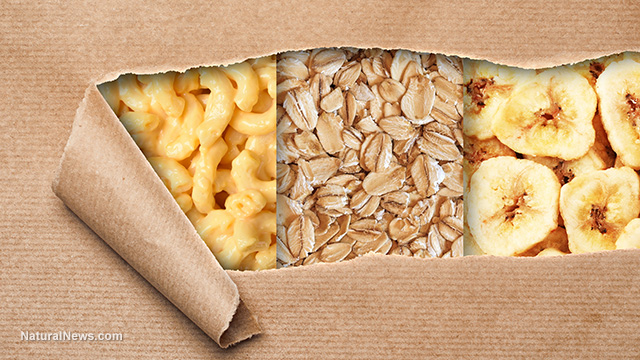A basic guide to fermenting vegetables
03/11/2019 / By Zoey Sky

Nutritious cultured or fermented vegetables are good for your gut health. But did you know that instead of buying expensive fermented foods from health stores, you can make them at home?
Make your own fermented vegetables to save money on groceries
One jar of fermented vegetables at a local urban provisions shop usually costs at least $10 to $15. But instead of shelling out this much money, which you can use to buy other items, you only need about five minutes of prep time and at least $2 worth of ingredients to make your own fermented vegetables.
The simple three-step process detailed below can be applied to almost any kind of vegetable.
Prepare the vegetables.
First, decide on the vegetable that you want to ferment. Your options include:
- Beets
- Bell peppers
- Broccoli
- Cabbage leaves (green or red)
- Carrots
- Celery
- Fennel
- Garlic
- Ginger
- Jalapeno
- Onions (red, white, or yellow)
- Radishes
- Sweet potato
Take note that the finer you chop or shred the vegetables, the faster they will ferment. Finely chopping or shredding the vegetables also ensures that you can pack more of them in one jar.
You can use almost any kind of vegetable when fermenting. Alternatively, you can combine different vegetables to make a healthy fermented side dish. Depending on the vegetable you want to ferment, wash and peel it the same way you would if you were going to eat it raw. (Related: 4 Good reasons why you should give fermented foods a try.)
Add brine to the vegetables.
The salt in fermented foods prevents mold from forming in the final product. Salt also allows beneficial bacteria to grow in the fermented vegetables. Adding salt also helps produce crispy fermented vegetables.
Store the vegetables in a Mason jar or fermentation crock, then cover them with a brine solution made from one tablespoon of salt per cup of water (use natural, non-iodized salt). Add herbs and other seasonings as desired.
For this step, you need to keep the vegetables submerged in the brine. Otherwise, anything exposed to air will rot. When using vegetables that float, use something heavy to weigh them down. You can also use fermentation weights to keep them submerged.
Let the vegetables ferment.
If you’re using a Mason jar, tighten the lid until it is barely snug. Doing this helps prevent oxygen from entering, but lets carbon dioxide escape from the jar. Otherwise, pressure can build up in the jar until it explodes. To avoid this, use a fermentation crock if you have one. Store the Mason jar or fermentation crock in a cool, dark place with a temperature that stays around 60 to 70 degrees Fahrenheit.
Fermentation times may vary from three days to three months or more, depending on the vegetable you use, temperature, and other factors. Taste the fermented vegetables to determine if it’s ready for consumption. Once you achieve the desired taste, refrigerate the vegetables to prevent further fermentation.
Experiment with other vegetables to make your own delicious fermented foods and save on grocery money.
Recipe for fermented carrot sticks
If you want to introduce healthy fermented foods to your kids, try this recipe for fermented carrot sticks.
This crunchy and nutritious carrot snack has a fairly mild flavor. You can also add some garlic cloves and peppercorns for an extra kick.
Ingredients:
- 1 quart water
- 1 to 3 tablespoon (tbsp) sea salt
- 2 to 3 pounds carrots (cut into sticks)
- Garlic cloves (optional)
- Peppercorns (optional)
Instructions:
- Dissolve the sea salt in the water.
- Place the carrot sticks in a Mason jar, then pour the liquid over the carrots. Leave at least one to two inches headspace.
- If the carrots float, use weights to keep them submerged.
- Cover the jar with an airlock lid, tight lid, or a coffee filter secured with a rubber band.
- Culture at room temperature (60 to 70 degrees Fahrenheit) until you achieve the desired flavor and texture. If you’re using a tight lid, “burp” the jar daily to release excess pressure.
- Once the carrots are done fermenting, put a tight lid on the jar and refrigerate the final product. The carrots will taste better the longer they’re refrigerated.
Sources include:
Tagged Under: DIY, fermented foods, fermented vegetables, food independence, Food Preservation, food supply, how-to, recipes, vegetables



















